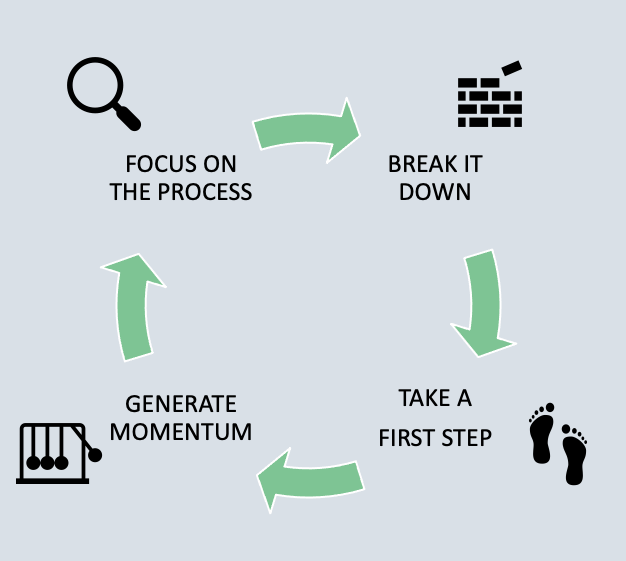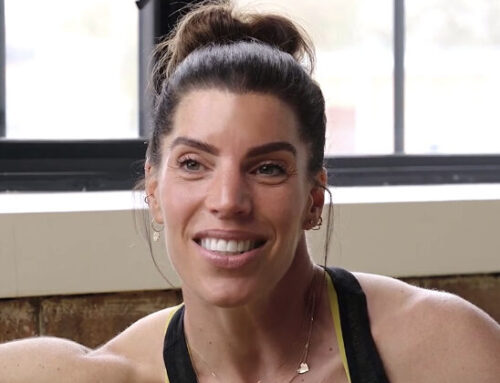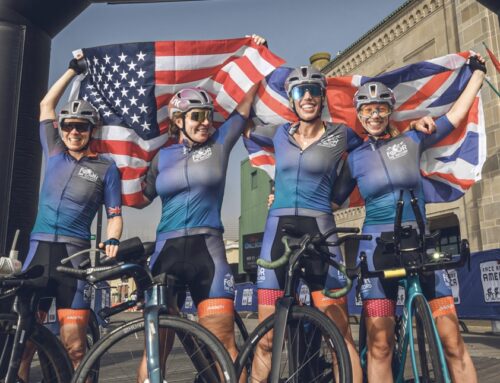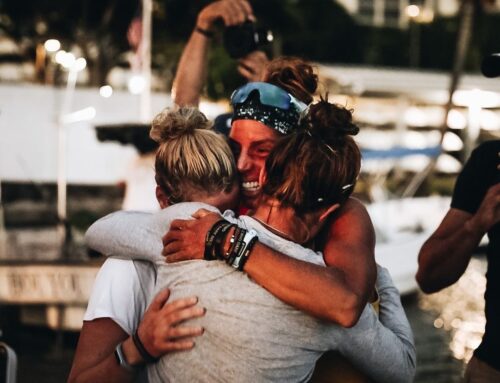
There’s a great saying from William H Murray;
“Whatever you can do, or dream you can, begin it”
And never a truer word spoken that ‘the first step is the hardest’. But it’s only the hardest to complete because you have zero momentum. You have to pick up out of nowhere and begin. Often, you may not even know where to begin so you avoid the task or project altogether.
So how do we create momentum?
Mel Robbins’ infamous method involves nothing more complex than a simple 5, 4, 3, 2, 1 countdown. On 1, you gotta be DOING something – which might just be standing up. And there’s a lot to be said for that.
The first thing you do could be a piece of research, or speaking to someone with experience in what you’re about to undertake. If it’s a physical endeavour, you might just go for a brisk walk. It might be sharing your plans publicly or with friends – for a bit of accountability. It might be creating ‘forcing functions’ – things that make it really difficult for you to back out, like raising finance or setting up a fundraising endeavour.
The beauty of this is that as soon as you take the intention out of your head and say it out loud, your behaviour starts to change in subtle ways instantly TOWARDS that goal, trust me when I say the universe has a funny way of setting wheels in motion – but you have to initiate the first movement.
The first thing I aim to do when I’m undertaking a new endeavour is to find someone who has already done it and ask them if they would share their experience, either in person or via a phone call or Zoom chat. You’ll be amazed how small the world is when it comes to things like this, you are almost guaranteed to know someone who knows someone who has done it, or something similar. Before I did SAS: Who Dares Wins, a friend of mine set up an anonymous phone call with someone who had been in the SAS. It was both highly intimidating and awe-inspiring at the same time. But it had the desired effect, I couldn’t stop thinking about doing it.
I spoke to a number of ocean rowers before our Pacific crossing. Some had rowed the Atlantic, others were among the very few people in the world who have rowed the Pacific. Realising how ‘normal’ these people were encouraged me to believe that if they had done it, I could do it too.
Before the Ice Ultra in the Arctic, I spoke to my friend Jenny who had used it as a ‘training run’ for her South Pole expedition. She convinced me that although I had no experience in that environment whatsoever, I was perfectly capable and that it was all about mental attitude.
I have already begun these conversations for the Race Across America next year. And while it seems so far off and our campaign so much in its infancy that we could easily back out, I know I’ve already got the bug and have unearthed some vital knowledge that has already made me think ‘maybe it won’t be that hard’.
Once you’ve created the initial momentum, that’s honestly the hardest part dealt with. After that, it’s about breaking it down, writing lists, getting LOST in the process – forgetting about the big, end goal at times. Then you just have to keep that cycle going. Don’t fight the boring, administrative aspects – they make ALL the difference between success and failure.
Here’s a visual representation I like to call ‘The Readiness Cycle’.

The trick is working on all the different parts of general preparedness until you are so far down the lane that the only way out is to keep going.
Remembering that what you think might be the ‘finish’ may well move too (think global pandemic, moving goal posts, obstacles along the way). The less you are focused on ‘the thing’ and the more you are focused on the tiny cumulative elements that make up the whole, the higher your chance of adherence and success.
Good luck!




